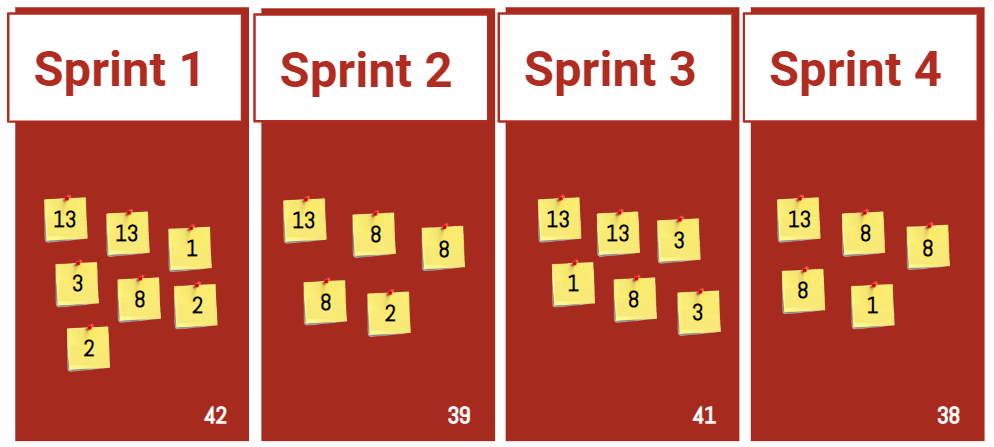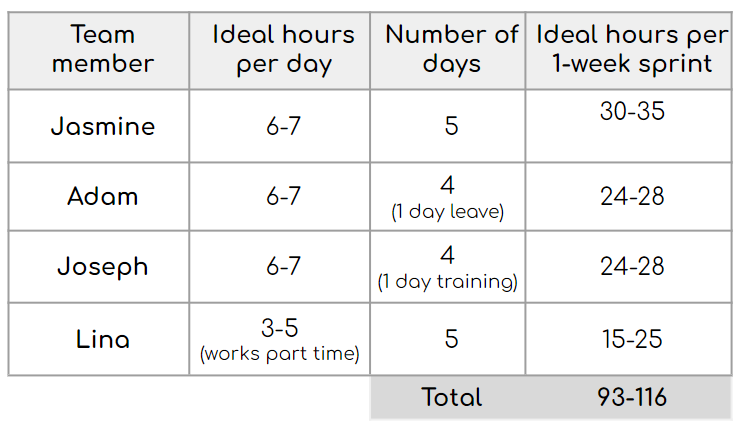Agile team velocity is a measure of the amount of work a team can complete in a given iteration or sprint. It’s typically expressed in terms of story points or other units of work agreed upon by the team; It is the key metric in Scrum.
Essentially, it helps your team understand how much they can accomplish within a fixed timeframe, allowing for better planning and forecasting in subsequent iterations. Velocity isn’t about individual performance but rather a collective measure of the team’s capacity for delivering work.
Why is Velocity important?
Velocity is important because it helps teams predict how much work they can accomplish in a sprint, plan their capacity effectively, track performance over time, and manage risks. It provides transparency, sets clear expectations, and supports continuous improvement.
How to Calculate Your Team Velocity
Before calculating your team’s velocity, it’s recommended that they have finished a minimum of three to five sprints. The velocity of a team is calculated by adding together the story points of all the user stories that have been successfully completed within a single sprint.
Story points from stories that are unstarted, incomplete, or partially completed should be excluded from the calculation of the team velocity. After several sprints, it’s advisable to calculate the average velocity from the last three or four sprints.

Team Average Velocity = (42+ 39 + 41 + 38) / 4 = 40 story points
Velocity & Sprint Planning
Velocity helps a project manager of an Agile project to determine the number of sprints needed for the project and the duration of each sprint. By analyzing the team’s velocity over several sprints, the project manager can gain insight into the team’s capacity to complete work within a given timeframe.
When planning for a new sprint, the scrum team must consider the velocity of the preceding sprint(s). For instance, if the team’s velocity stands at 40 story points, it’s reasonable to aim for a similar workload of around 40 points for the upcoming sprint.
Velocity & Release Planning
When planning a release, the Scrum team needs to estimate all the work items for the release and then divide that total by the average velocity. For example, if the team’s velocity is 40 story points and the release encompasses 200 points, you will require 5 releases to complete all the work; 200 / 40 = 5
Velocity vs Team Capacity
Velocity is not the same as Team capacity; the latter refers to the amount of work team members can realistically accomplish within a sprint, based on various factors such as their availability.
Example: When 1 out of 4 team members takes a leave for the whole sprint duration, the team’s capacity will be estimated at 30 story points rather than 40 story points.
Effort-hour Capacity
Capacity could also be expressed in effort hours, the same as the sprint backlog tasks. In the below example, this team should consider a capacity of more than 93 hours and less than 116 hours when committing to sprint work. Unlike velocity, which is based on past performance, capacity is a forward-looking estimate of the team’s capabilities.

In summary, velocity measures the team’s historical performance in completing work, while capacity is a projection of the team’s capability to complete work in the future. Both metrics are essential for effective sprint planning and project management in Agile, helping teams deliver value consistently and sustainably.
Check Scrum Cheat Sheets to learn more about Scrum values, principles, artifacts, roles, events, and best practices.
